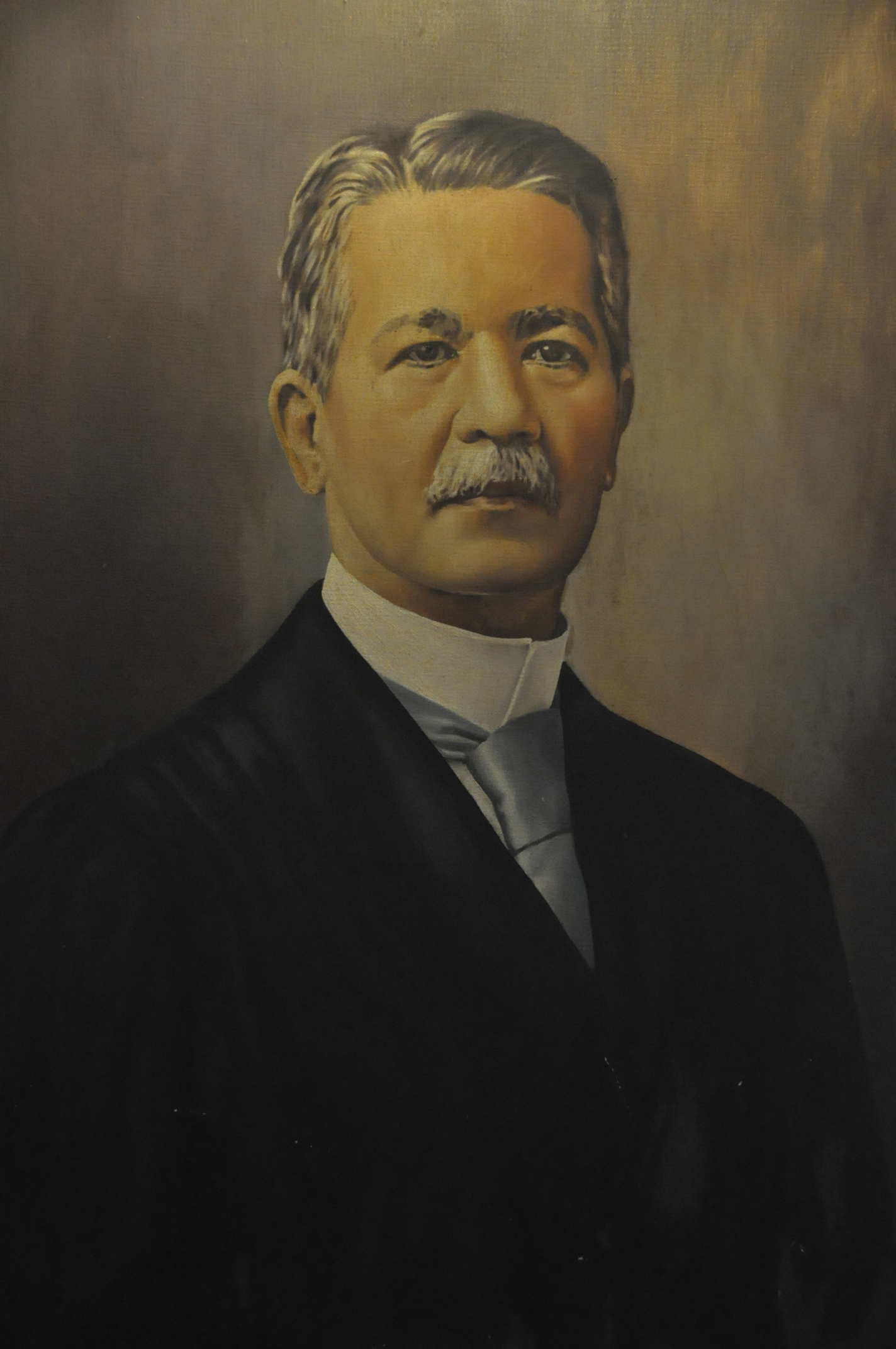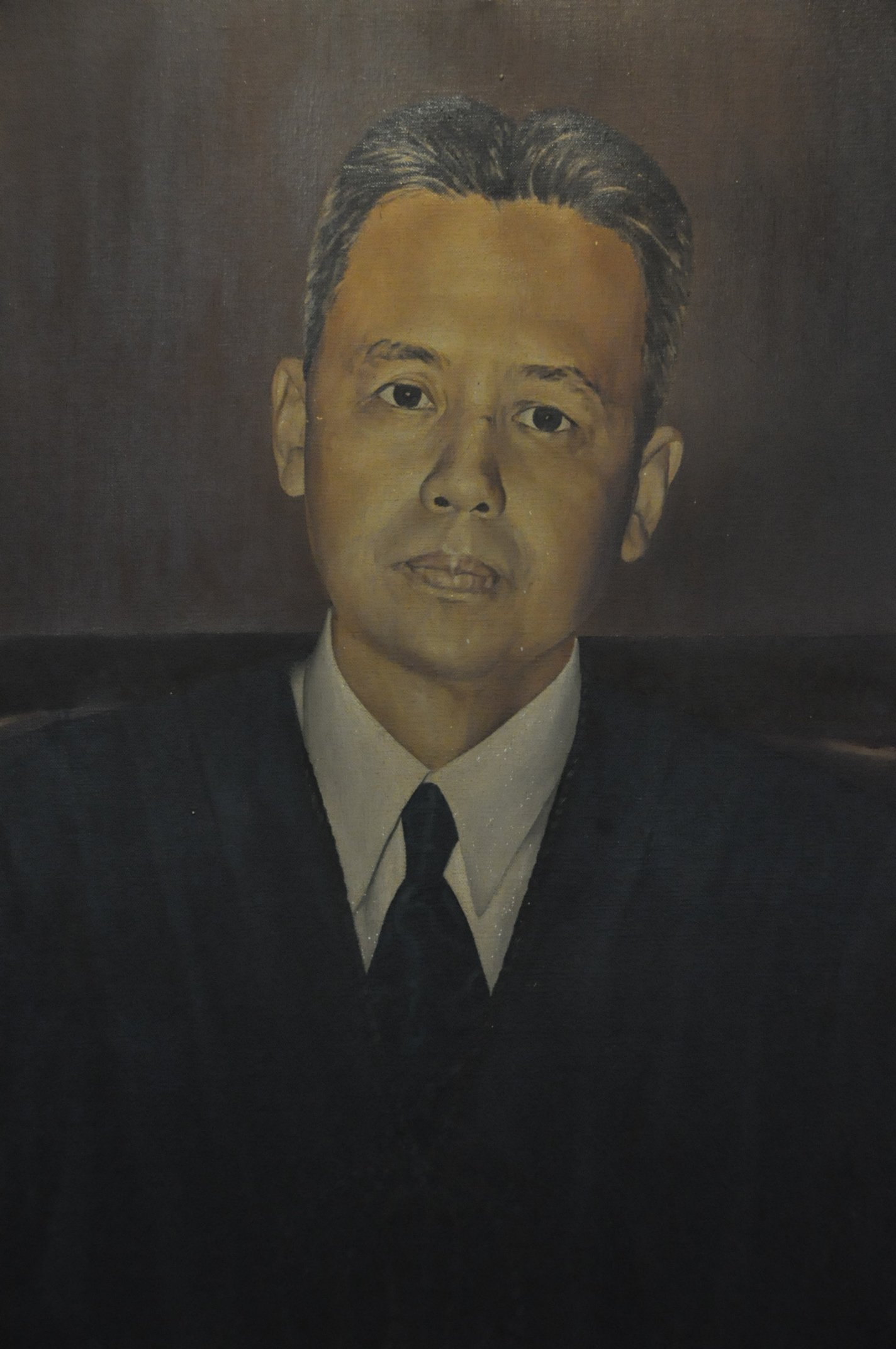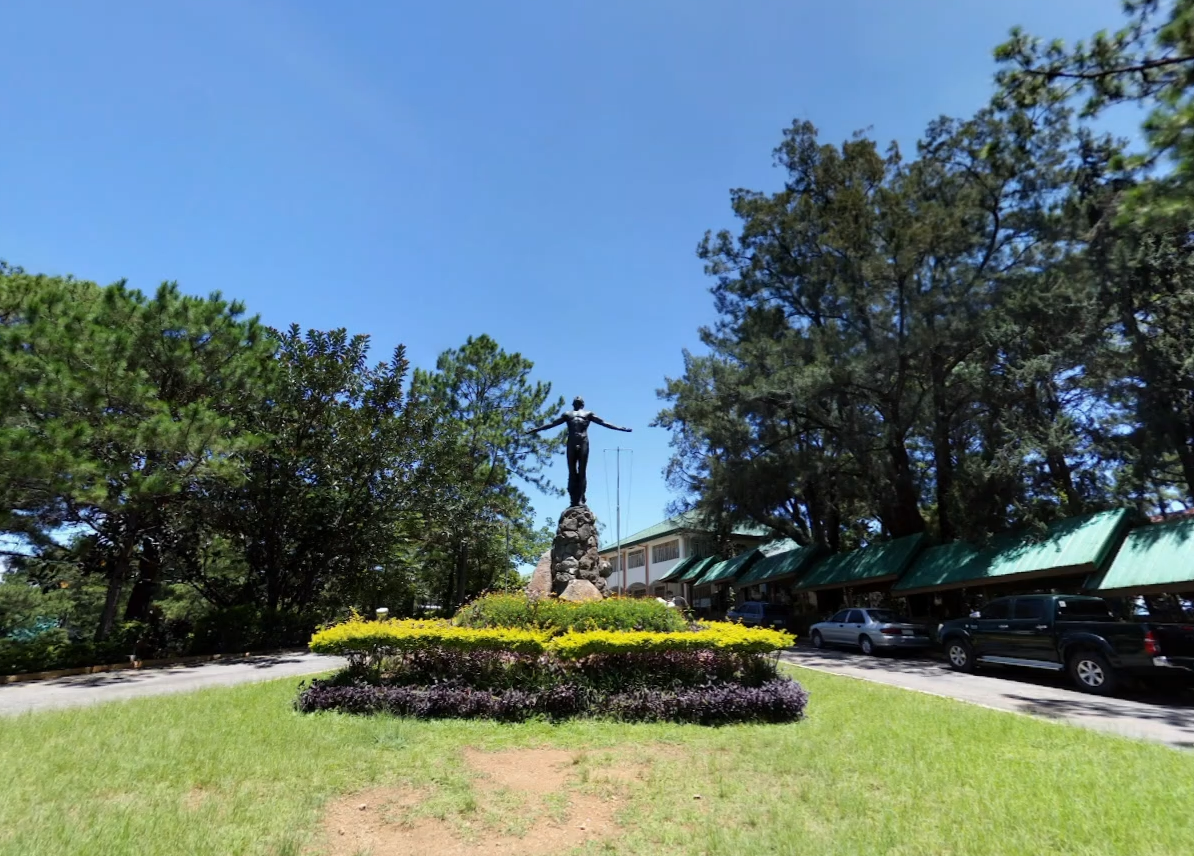|
Philippine Civil Code
The Civil Code of the Philippines is the product of the codification of private law in the Philippines. It is the general law that governs family and property relations in the Philippines. It was enacted in 1950, and remains in force to date with some significant amendments. History The Philippine Civil Code is strongly influenced by the Spanish Civil Code, which was first enforced in 1889 within the Philippines when it was still a colony of the Spanish Empire. The ''Código Civil'' remained in effect even throughout the American Occupation; by 1940, the Commonwealth Government of President Manuel Luis Quezon formed a Commission tasked with drafting a new Code. The Commission was initially headed by Chief Justice Ramón Avanceña, but its work was interrupted by the Japanese invasion and the Second World War. The Commission's records were later destroyed by Allied bombing during the Battle of Manila in 1945. In 1947, President Manuel Roxas of the Third Republic created ... [...More Info...] [...Related Items...] OR: [Wikipedia] [Google] [Baidu] |
Philippines
The Philippines, officially the Republic of the Philippines, is an Archipelagic state, archipelagic country in Southeast Asia. Located in the western Pacific Ocean, it consists of List of islands of the Philippines, 7,641 islands, with a total area of roughly 300,000 square kilometers, which are broadly categorized in Island groups of the Philippines, three main geographical divisions from north to south: Luzon, Visayas, and Mindanao. With a population of over 110 million, it is the world's List of countries and dependencies by population, twelfth-most-populous country. The Philippines is bounded by the South China Sea to the west, the Philippine Sea to the east, and the Celebes Sea to the south. It shares maritime borders with Taiwan to the north, Japan to the northeast, Palau to the east and southeast, Indonesia to the south, Malaysia to the southwest, Vietnam to the west, and China to the northwest. It has Ethnic groups in the Philippines, diverse ethnicities and Culture o ... [...More Info...] [...Related Items...] OR: [Wikipedia] [Google] [Baidu] |
Chief Justice Of The Supreme Court Of The Philippines
The chief justice of the Philippines () presides over the Supreme Court of the Philippines, Supreme Court and is the highest judicial officer of the government of the Philippines. As of April 5, 2021, the position is currently held by Alexander Gesmundo, who was appointed by President Rodrigo Duterte following the Supreme Court of the Philippines#Composition and manner of appointment, early retirement of his predecessor, Diosdado Peralta, in March 2021. The chief justice, who was first named on June 11, 1901, in the person of Cayetano Arellano, is the oldest existing major governmental office continually held by a Filipino, preceding the presidency and vice presidency (1935), senators (1916, or as the Taft Commission, on September 1, 1901) and the members of the House of Representatives (1907 as the Philippine Assembly). Duties and powers The power to appoint the chief justice lies with the president of the Philippines, who makes the selection from a list of three nominees prep ... [...More Info...] [...Related Items...] OR: [Wikipedia] [Google] [Baidu] |
Senate Of The Philippines
The Senate of the Philippines () is the upper house of Congress of the Philippines, Congress, the bicameral legislature of the Philippines, with the House of Representatives of the Philippines, House of Representatives as the lower house. The Senate is composed of 24 senators who are elected at-large (the country forms one district in Philippine Senate elections, senatorial elections) under a Plurality block voting, plurality-at-large voting system. Senators serve six-year terms with a maximum of two consecutive terms, with half of the senators elected in staggered elections every three years. When the Senate was restored by the Constitution of the Philippines, 1987 Constitution, the 24 senators who were elected in 1987 served until 1992. In 1992, the 12 candidates for the Senate obtaining the highest number of votes served until 1998, while the next 12 served until 1995. This is in accordance with the transitory provisions of the Constitution. Thereafter, each senator electe ... [...More Info...] [...Related Items...] OR: [Wikipedia] [Google] [Baidu] |
Associate Justice Of The Supreme Court Of The Philippines
An associate justice of the Supreme Court () is one of fifteen members of the Supreme Court of the Philippines, Supreme Court, the highest court in the Philippines. The Chief Justice of the Supreme Court of the Philippines, chief justice presides over the high court, but carries only one of the 15 votes in the court. Traditionally, the chief justice is deemed ''primus inter pares'' ("first among equals") among the justices. Until 1973, only men were appointed as Associate Justices to the Court. Cecilia Muñoz-Palma, an appointee of President of the Philippines, President Ferdinand Marcos, was the first woman to sit on the court. Since then, 15 other women have been appointed as Associate Justices of the Supreme Court. The most recent woman to be appointed to the high tribunal is Maria Filomena Singh, a former justice of the Court of Appeals of the Philippines on May 18, 2022. Incumbent associate justices , there are fourteen associate justices on the Supreme Court, with the m ... [...More Info...] [...Related Items...] OR: [Wikipedia] [Google] [Baidu] |
Supreme Court Of The Philippines
The Supreme Court (; colloquially referred to as the ' (also used in formal writing), is the highest court in the Philippines. It was established by the Taft Commission on June 11, 1901, through the enactment of Act No. 136, which abolished the Real Audiencia of Manila, the predecessor of the Supreme Court. The Supreme Court compound is located in what was formerly a part of the University of the Philippines Manila campus. It occupies the corner of Padre Faura Street and Taft Avenue in Ermita, Manila, with the main building sited directly in front of Philippine General Hospital's cancer institute. History Early history Prior to the conquest of Spain, the islands of the Philippines were composed of independent barangay state, barangays, each of which is a community composed of 30 to 100 families. Typically, a barangay is headed by a ''datu'' or a local chief who exercises all functions of government: executive, legislative and judicial; he is also the commander-in-chief in time ... [...More Info...] [...Related Items...] OR: [Wikipedia] [Google] [Baidu] |
Jorge Bocobo
Jorge Cleofas Bocobo (October 19, 1886 – July 23, 1965) was a Filipino author and jurist. He was appointed Secretary of Public Instruction by President Manuel L. Quezon and Justice of the Supreme Court from 1942 to 1944 under President Jose P. Laurel. Bocobo was the principal author of the Civil Code of the Philippines. Early life and education Bocobo was born in October 19, 1886 in Gerona, Tarlac to Tranquilino Bocobo y Duenas and Rita Teodora Tabago y Cleofas. He studied his early education in his hometown until at the age of 17, he went to Manila and attended a private school there. He was chosen as one of the 100 Philippine students for the Pensionado program, which sent exceptional Filipino students to attend a U.S. college. This enabled Bacobo to attend Indiana University School of Law. In June 1907, he received his Bachelor of Laws (LL.B.). Career University of the Philippines Bocobo returned to the Philippines. In 1910, he became a member of the faculty of the Col ... [...More Info...] [...Related Items...] OR: [Wikipedia] [Google] [Baidu] |
University Of The Philippines College Of Law
The University of the Philippines College of Law (often referred to as UP Law) is the law school of the University of the Philippines Diliman. Formally established in 1911 in UP Manila, it is the third oldest continually-operating law school in the Philippines. Since 1948, it has been based in UP Diliman in Quezon City, the flagship of the UP System's eight constituent universities. The college also holds extension classes at the Bonifacio Global City campus of UP Diliman in Taguig and the Iloilo City campus of UP Visayas. UP Law is noted for having produced the largest number of bar topnotchers and maintaining one of the highest bar passing rates among law schools in the Philippines. History It was George Malcolm who had first proposed the establishment of the College of Law within the University of the Philippines system. However, the Board of Regents of the University of the Philippines had initially resisted the proposal. Malcolm thus arranged for the Manila YMCA ... [...More Info...] [...Related Items...] OR: [Wikipedia] [Google] [Baidu] |
University Of The Philippines
The University of the Philippines (UP; ) is a Higher education in the Philippines#State universities and colleges, state university system in the Philippines. It is the country's national university, as mandated by List of Philippine laws, Republic Act No. 9500 (UP Charter of 2008), giving it institutional autonomy. Originally founded by the Insular Government, American occupational government on June 18, 1908, it was established through the ratification of Act No. 1870 of the 1st Philippine Legislature to serve as an "advanced instruction in literature, philosophy, the sciences and arts, and to give professional and technical training" to eligible students regardless of "age, sex, nationality, religious belief and political affiliation." The University of the Philippines system has 8 constituent universities (CUs) and 1 autonomous college: University of the Philippines Diliman, UP Diliman, which serves as the system's flagship university, University of the Philippines Los B ... [...More Info...] [...Related Items...] OR: [Wikipedia] [Google] [Baidu] |
Dean (education)
Dean is a title employed in academic administrations such as colleges or universities for a person with significant authority over a specific academic unit, over a specific area of concern, or both. In the United States and Canada, deans are usually university professors who serve as the heads of a university's constituent colleges and schools. Deans are common in private preparatory schools, and occasionally found in middle schools and high schools as well. Origin A "dean" (Latin: '' decanus'') was originally the head of a group of ten soldiers or monks. Eventually an ecclesiastical dean became the head of a group of canons or other religious groups. When the universities grew out of the cathedral schools and monastic schools, the title of dean was used for officials with various administrative duties. Use Bulgaria and Romania In Bulgarian and Romanian universities, a dean is the head of a faculty, which may include several academic departments. Every faculty unit of u ... [...More Info...] [...Related Items...] OR: [Wikipedia] [Google] [Baidu] |
History Of The Philippines (1946-1965)
The history of the Philippines dates from the earliest hominin activity in the archipelago at least by 709,000 years ago. '' Homo luzonensis'', a species of archaic humans, was present on the island of Luzon at least by 134,000 years ago. The earliest known anatomically modern human was from Tabon Caves in Palawan dating about 47,000 years. Negrito groups were the first inhabitants to settle in the prehistoric Philippines. These were followed by Austroasiatics, Papuans, and South Asians. By around 3000 BCE, seafaring Austronesians, who form the majority of the current population, migrated southward from Taiwan. By 2000 BCE the archipelago was the crux of a trans-oceanic Philippine jade culture. Scholars generally believe that these ethnic and social groups eventually developed into various settlements or polities with varying degrees of economic specialization, social stratification, and political organization. Some of these settlements (mostly those located on major rive ... [...More Info...] [...Related Items...] OR: [Wikipedia] [Google] [Baidu] |
Manuel Roxas
Manuel Acuña Roxas (; January 1, 1892 – April 15, 1948) was a Filipino lawyer and politician who served as the fifth president of the Philippines from 1946 until his death in 1948. He served briefly as the third and last President of the Commonwealth of the Philippines from May 28, 1946, to July 4, 1946, and became the first President of the Independent History of the Philippines (1946–65), Third Philippine Republic after the United States ceded its sovereignty over the Philippines. Early life and education Manuel Roxas y Acuña was born on January 1, 1892, in Roxas City, Capiz, Capiz (present-day Roxas City) to Gerardo Roxas y Luis and Rosario Acuña y Villaruz. He was a Posthumous birth, posthumous child, as his father died after being mortally wounded by the Spanish Guardia Civil the year before. He and his older brother, Mamerto, were raised by their mother and her father, ''Don'' Eleuterio Acuña. His other siblings from his father included Leopoldo and Margarita ... [...More Info...] [...Related Items...] OR: [Wikipedia] [Google] [Baidu] |
Battle For The Liberation Of Manila
The Battle of Manila (; ; ; ) was a major battle during the Philippine campaign of 1944–45, during the Second World War. It was fought by forces from both the United States and the Philippines against Japanese troops in Manila, the capital city of the Philippines. The month-long battle, which resulted in the death of at least 100,000 civilians and the complete devastation of the city, was the scene of the worst urban fighting fought by American forces in the Pacific theater. During the battle, Japanese forces committed mass murder against Filipino civilians, while American firepower also killed many people. The fierce resistance of Japanese troops entrenched in many of the city's landmarks, along with the usage of massed artillery barrages by American forces to dislodge them, destroyed much of Manila's architectural and cultural heritage dating back to the city's founding. Often referred to as "the Stalingrad of Asia", the battle is widely considered to be one of the most ... [...More Info...] [...Related Items...] OR: [Wikipedia] [Google] [Baidu] |





